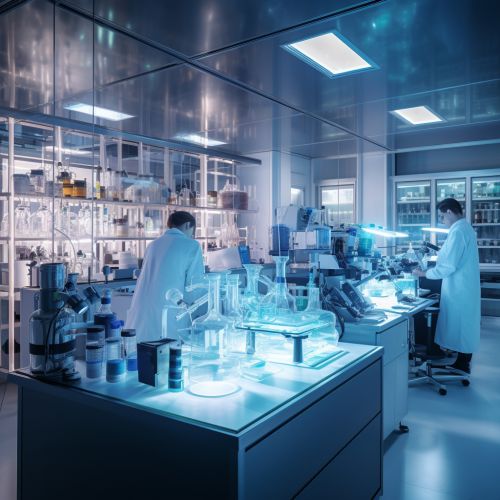Drug Development
Introduction
Drug development is the process of bringing a new pharmaceutical drug to the market once a lead compound has been identified through the process of drug discovery. It includes pre-clinical research on microorganisms and animals, filing for regulatory status, such as via the U.S. FDA, for an investigational new drug to initiate clinical trials on humans, and may include the step of obtaining regulatory approval with a new drug application to market the drug.


Pre-clinical development
Pre-clinical development, also named preclinical study or nonclinical study, refers to laboratory experiments conducted on cells, animals, and animal models before they are permitted to be administered to humans in clinical trials. During this stage, important feasibility, iterative testing, and drug safety data are collected. The main goals of pre-clinical studies are to determine the safe dose for first-in-man study and assess a product's safety profile. Products may include new medical devices, drugs, gene therapy solutions, etc.
Clinical trials
Clinical trials involve three or four steps:
- Phase I trials, usually in healthy volunteers, determine safety and dosing.
- Phase II trials are used to get an initial reading of efficacy and further explore safety in small numbers of sick patients.
- Phase III trials are large, pivotal trials to determine safety and efficacy in sufficiently large numbers of patients.
- If a compound passes through Phases I, II, and III, it will usually be approved by the national regulatory authority for use in the general population.
- Phase IV are 'post-approval' studies.
Before pharmaceutical companies start clinical trials on a drug, they conduct extensive pre-clinical studies.
Regulatory approval
Once a new compound has been identified and tested in the lab, an application must be submitted to the appropriate regulatory agencies in order to test the drug in humans. In the United States, this is the FDA and in Europe, it is the EMA. The application's contents are all the data collected from the pre-clinical studies, manufacturing information, proposed clinical protocols, and investigator information.
Post-approval research and monitoring
After a drug has been approved for use by the regulatory authorities, it will be monitored for performance in the general population by the market surveillance. If new side effects are found post-launch, or issues of safety arise, the regulatory authorities can withdraw a product from the market.
Drug discovery and development costs
The cost of drug discovery and development has been a hot topic for many years. In 2003, it was estimated to cost $802 million. In 2006, a study produced by the Tufts Center for the Study of Drug Development covering the period 1983–2003, calculated the cost per new drug to be $802 million. This figure was updated to $2.558 billion in 2014.
